|
|
 |
|
|
2. Panzerdivision in the Ardennes
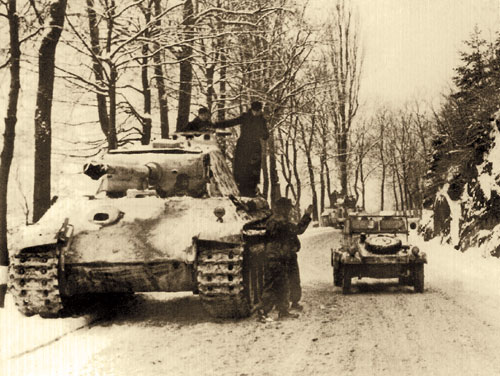 |
2. Panzerdivision
During the Ardennes Offensive, December 1944
By Alexander Tripp
The Early Years
2. Panzerdivision was formed in October 1935, making it one of the oldest Panzer Divisions of the German Army. The first divisional commander was no other than Heinz Guderian himself, who developed the theories of tank warfare before the war.
After the Anschluss of Austria, the Division was transferred to Vienna and many Austrians joined it ranks, earning the Division its nickname ‘Wiener Panzer Division’.
|
|
It took part in the Blitzkrieg campaigns in Poland 1939, France 1940 and the Balkans and Greek in 1941. After the end of the Campaign in the Balkans, the tracked vehicles of the division were shipped to Italy, but both ships struck British mines and sunk. The loss of all tanks delayed the deployment of the Division in time for Operation Barbarossa.
In October 1941 the 2nd Panzer arrived in Russia and was deployed as part of the Herresgruppe Mitte advancing towards Moscow. When the offensive stalled, the men of 2. Panzerdivision were only 16 km from the city. The Division was pushed back from the gates of Moscow by the massive Soviet counter-offensive in the Winter of 1941/42. In the next months the Division was embroiled in heavily fought defensive battles. After a short refit at Smolensk in the Summer of 1942, the Division was deployed in the defence of Rzhev.
During the battle of Kursk in 1943, 2. Panzerdivision was part of Models 9th Army, forming the northern pincer. After the failure of the Kursk Offensive, the men of 2. Panzerdivision tried to hold the frontlines along the Dnieper River, suffering heavy casualties in the progress. In spring 1944 the Division was withdrawn to France for refitting.
|
|
Normandy
When the Allies landed in Normandy 2. Panzerdivision was at full strength with two of its four infantry battalions mounted in half-tracks. The division was deployed in the area around Amiens, and only two days after the invasion the division was ordered to move towards Normandy. The leading elements entered combat on 12 June. The first battles were against the British 7th Armoured Division near Villers-Bocage, forcing the Desert Rats to retreat. The Wiener Panzer Division remained in the Caumont area.
|
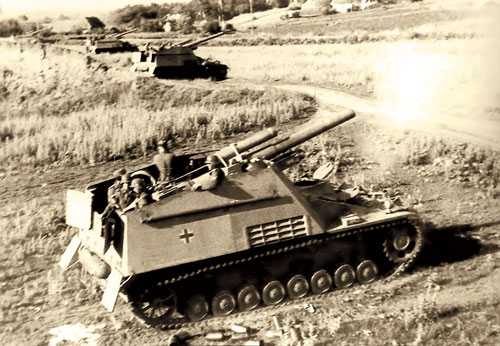 |
|
During the British operation Epsom the Panther battalion supported the forces defending against the British offensive and was credited with the destruction of 53 enemy tanks.
After the Allies began Operation Cobra and broke-through the thin lines of the Panzer Lehr Division and streamed south, Hitler ordered Operation Lüttich, the ill fated attack towards Mortain and Avranches. During the night of 6 August 2. Panzerdivision attacked and broke through the American lines only to be stopped by American reinforcements about 3 km short of Avranches. 116. Panzerdivision on the right flanked started the attack too late to make any progress while the SS Divisions to the south were stopped by the determined resistance of the US 30th Infantry Division. By noon, 7 August, the morning fog had dispersed and the attacks of Allied fighter-bombers made all further German attacks impossible.
|
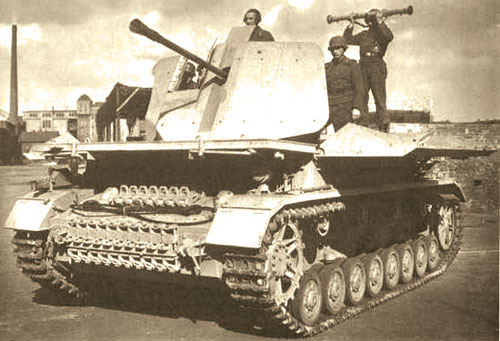 |
In the next weeks the Allied forces closed the Falaise pocket, but 2. Panzerdivision escaped, withdrawing towards the Westwall more or less intact. Although the Division suffered heavy casualties in the Normandy battles, in particular the loss of heavy weapons and tanks was high, the division was far from destroyed.
Deployed at the Westwall, the division supported the elimination of the American bridgehead at Wallendorf during September. Earmarked for the planned Ardennes Offensive, 2. Panzerdivision was finally withdrawn in November to received new equipment and replacements in the Eifel area.
|
| The Panzer Regiment retained two Abteilungen (battalions), one with Panther and the second with Panzer IV tanks. But each company was authorized to have only 14 tanks. In addition, the second Abteilung received StuG III assault guns for two of its companies in lieu of Panzer IV tanks. A further 21 StuG III were received by the Panzerjäger Abteilung. However, half-tracked vehicles were in short supply limiting the mobility of much of the division to the roads. |
|
The Battle of the Bulge
For the Ardennes Offensive 2. Panzerdivision was attached to the XLVII. Panzer Korps commanded by General der Panzertruppe Freiherr von Lüttwitz. In addition to 2. Panzerdivision, the Korps consisted of the Panzer Lehr Division and 26. Volksgrenadierdivision.
As soon as the Volksgrenadiere of 26. Volksgrenadierdivision had secured crossings over the Our and Clerf Rivers, 2. Panzerdivision was tasked to breakthrough the American lines, bypass Bastogne to the north and race towards the Meuse and capture the bridges there.
|
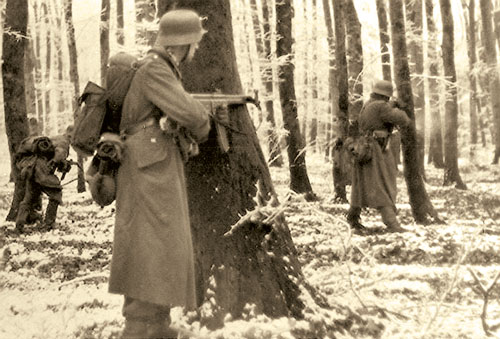 |
| Only one day before the start of the offensive Oberst Meinrad von Lauchert took command of 2. Panzerdivision, so he was unable to meet all his commanders before the start of the offensive. |
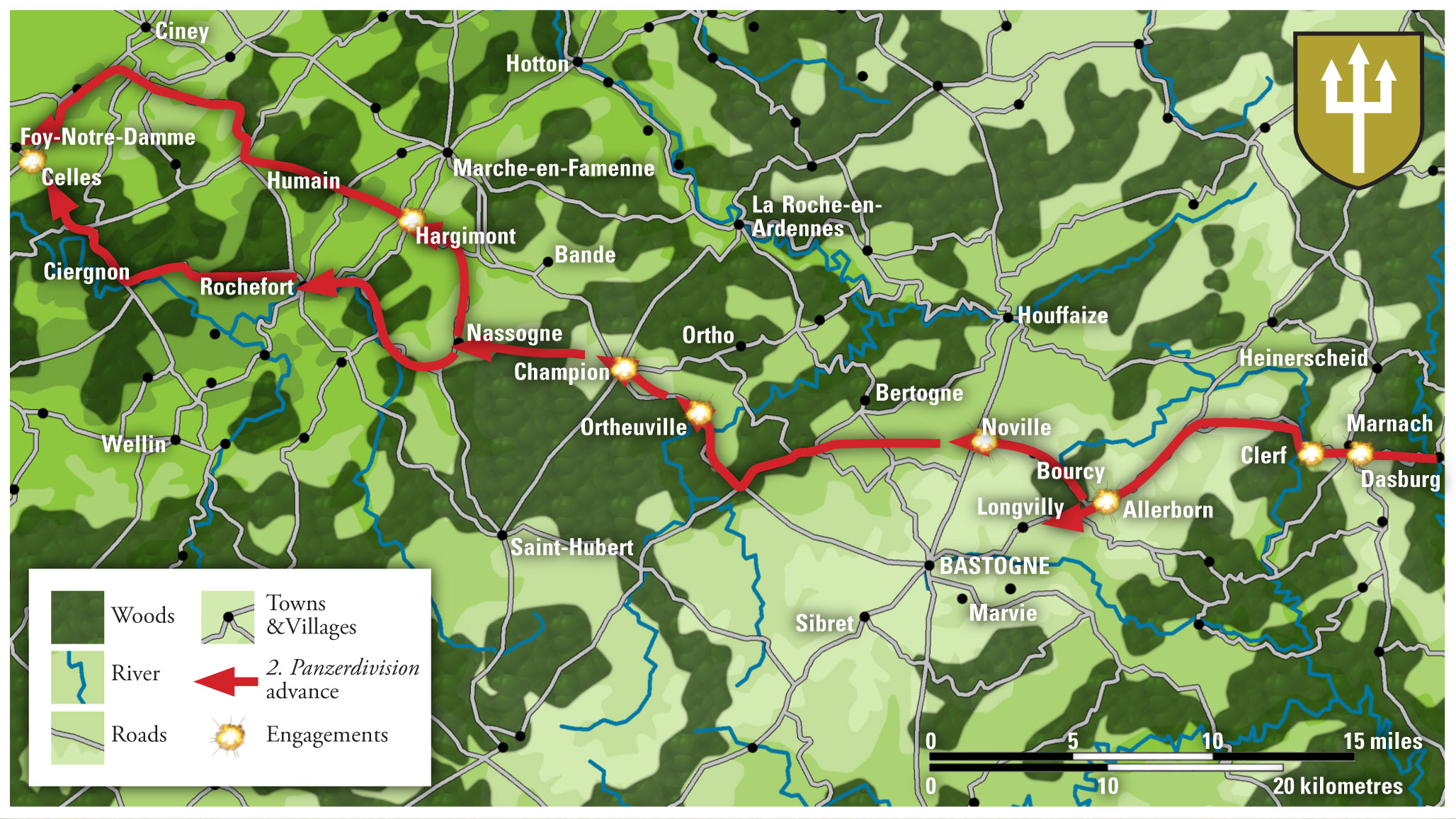 |
| In the pre-dawn hours of 16 December, Pioneers and a battalion of Panzergrenadiers crossed the Our river in rubber boats in order to capture the village of Marnach. This was meant to clear the road from Dasburg towards Clerf and further towards Bastogne, but the soldiers of the US 28th Infantry Division entrenched there held the village stubbornly. Only in the evening, when Pioneers finished a 60-ton bridge, were the division’s tanks able to cross the Our and join the fight. The defenders were then slowly pushed back. In the morning hours of 17 December an advance guard reached the town of Clerf, less than two miles west of Marnach and headquarters of the US 110th Infantry Regiment. The advance guard was stopped by Shermans of the 707th Tank Battalion. They lost four Panzer IV tanks in the fight, but destroyed three Shermans in return. The defenders of Clerf were furthermore reinforced by a tank company of the US 9th Armored Division, but in the evening all the American Sherman tanks were either destroyed or forced to retreat. Clerf was finally captured. On 18 December what was left of the 110th Infantry Regiment was forced to withdraw to the west. However, the stiff resistance of the 28th Infantry Division had played havoc with the German timetable. |
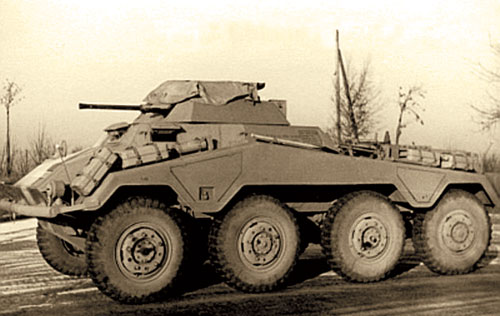 |
Meanwhile, CCR, US 9th Armored Division established two roadblocks east of Bastogne, the northern one near the village of Lullange, where the road from Clerf entered that leading to Bastogne. The second roadblock was further south near Allerborn. In the morning hours of 18 December the forward elements of Kampfgruppe Böhm reached the northern roadblock. With the tanks of Panzer Regiment 3 close behind, the roadblock was soon surrounded and annihilated. The southern roadblock was overrun shortly after dusk. |
|
Oberst von Lauchert now turned his Division to the northwest so as to swing past Bastogne in the north and maintain the momentum of the westward drive.
All the delays allowed the American reinforcements to reach Bastogne before the Germans. One of these was Team Desobry from CCB of the US 10th Armored Division which deployed at Noville. The little village north of Bastogne was directly in the way of 2. Panzerdivision. Covered by the morning fog, the tanks of 2. Panzerdivision manoeuvred for an attack on the village. When the fog suddenly lifted, more than thirty tanks were revealed to the defenders of Noville. Accurate fire from the American tanks and tank destroyers caused the attack to fail. At midday the 1st Battalion of the 506th Parachute Infantry Regiment, under Lieutenant Colonel James L. LaPrade reached Noville and immediately counterattacked. However, the paratroopers were unable to reach the ridge lines due to the withering German fire. Elements of 304. Panzergrenadier Regiment infiltrated toward the south of Noville. Threatened by the prospect of being surrounded and short of ammunition, the defenders of Noville finally retreated towards Bastogne on the afternoon 20 December, but they held up the advance of 2. Panzerdivision for nearly two days and caused heavy casualties.
|
|
The Highwater Mark
Shortly after midnight Kampfgruppe Böhm, which had bypassed Noville to the north, captured a bridge over the Ourthe River at Ortheuville. This opened the road to Marche and Namur invitingly, but 2. Panzerdivision did not move, as their tanks had run dry and they had to wait for fuel. This allowed the advance elements of the US 84th Infantry Division to occupy Marche. When the advance finally resumed at nightfall 22 December, stiff resistance was encountered at Marche. Lüttwitz ordered Lauchert to turn the bulk of his division west towards Dinant and the Meuse, and to leave only a blocking force towards Marche.
|
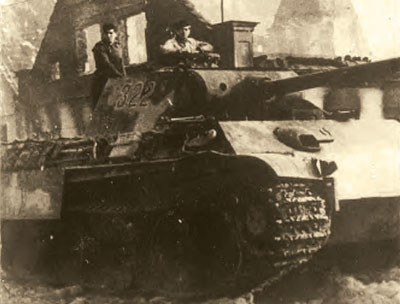 |
Kampfgruppe Böhm raced up the highway towards Dinant, followed by Kampfgruppe Cochenhausen, finally reaching the woods near Celles before daylight on 24 December. The advance elements of the division were only 9 km away from the Meuse crossings. The remainder of 2. Panzerdivision was stretched all the way back to south of Marche with the dual mission of continuing the westward advance and of protecting the northern flank.
Meanwhile, the American 2nd Armored Division began to arrive northeast of Celles. Their CCA moved south into Buissonville, while the 24th Cavalry Reconnaissance Squadron occupied Humain, blocking 2. Panzerdivision route of advance. The leading Kampfgruppen were cut off. |
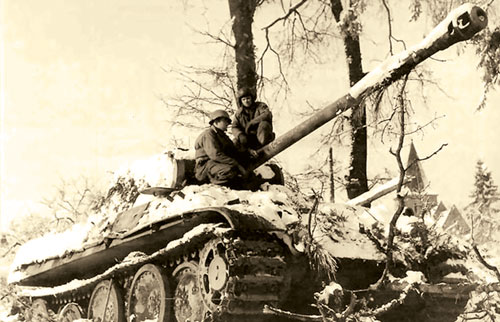 |
In the meantime Kampfgruppe Böhm had reached the village of Foy-Notre Dame were it encountered several tanks of the British 29th Armoured Brigade. Losing several vehicles to British fire and running out of fuel, the reconnaissance battalion went to ground. 2. Panzerdivision was stopped less than 5 km short of the Meuse crossings.
On 25 December CCB of the 2nd Armored Division launched its attack on the cut off German Kampfgruppen. It was a clear day, and the attack received excellent air support.
|
|
Kampfgruppe Böhm was soon destroyed. Lauchert ordered a relief attack to be conducted by Kampfgruppe Holtmeyer. The attack began on 25 December, but was soon stopped by the 2nd Armored Division. The remnants of Kampfgruppe Cochenhausen finally received permission to withdraw. Abandoning all their equipment about 600 men made it back to their own lines on the night of 26 December. 2. Panzerdivision was no longer combat effective. The Ardennes offensive had failed.
In 1945 the remnants of 2. Panzerdivision fought in the Mosel region and along the Rhine. When the war ended in May 1945, the division surrendered to American forces at Plauen.
|
|
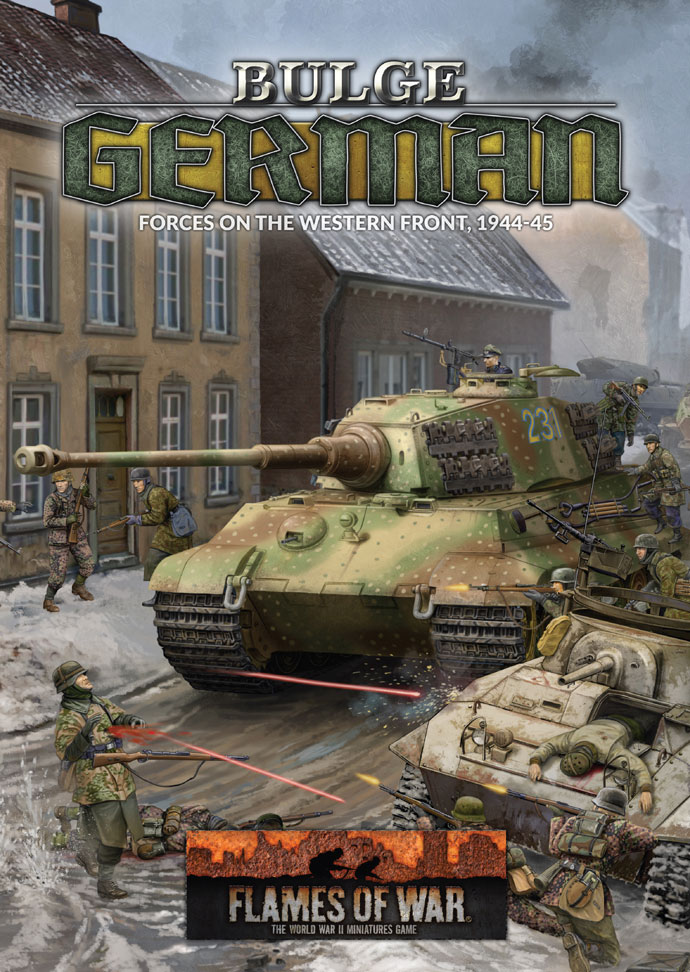
|
2. Panzerdivision Kampfgruppen and fielding them in Flames Of War
You can field 2. Panzerdivision during the Ardennes Offensive using Bulge: German.
During Operation Wacht am Rhein (Watch on the Rhine) 2. Panzerdivision was divided into a number of Kampfgruppen (Battle Groups) for the offensive. These were:
|
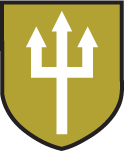 |
Kampfgruppe von Böhm
Commander: Major von Böhm (2. Panzer Aufklärungs-
abteilung)
Units: 2. Panzer Aufklärungsabteilung (including an armoured car company); and one Company of I. Abteilung/3. Panzer-Regiment with 14 Panther G tanks.
Kampfgruppe von Böhm was the advance guard of the division’s attack and led the way through the American lines. Their advance was halted at Foy-Notre-Dame and Dinant on 24 December 1944.
You can field a force based on Kampfgruppe von Böhm as either a Panther (late) Tank Company or a Command Card Reconnaissance Kampfgruppe. |
Kampfgruppe Cochenhausen
Commander: Major Ernst von Cochenhausen (304. Panzergrenadier-Regiment)
Units: II. Bataillon/304. Panzergrenadier-Regiment; two companies of I. Abteilung/3. Panzer-Regiment with 32 Panther G tanks; I. Bataillon/74. Panzer Artillerie-Regiment with 10 Wespe and 6 Hummel self-propelled guns; one self-propelled Battery of 273. FlaK Bataillon; 38. Panzerpionier-Abteilung.
Kampfgruppe Cochenhausen followed behind Kampfgruppe von Böhm as the division’s armoured battle group. However, all of the battle group’s panzergrenadier were mounted in trucks.
You can field a forced based on Kampfgruppe Cochenhausen as either a Panther (late) Tank Company or a Command Card Panzergrenadier Company. |
Kampgruppe Holtmeyer
Commander: Hauptmann Friedrich Holtmeyer (38. Panzerjäger Abteilung)
Units: 38. Panzerjäger Abteilung with 21 StuG G assault guns; II. Bataillon/2. Panzergrenadier-Regiment; I. Bataillon/304. Panzergrenadier-Regiment, II. Abteilung/3. Panzer-Regiment with 28 Panzer IV J tanks and 27 StuG G assault guns; III. Batailon/74. Panzerartillerie-Regiment. It also contained the 3. Panzer regiment’s staff and anti-aircraft tanks. It was further supported by 1124. Artillerie Batterie with four 12.8cm K81 guns and 5th and 6th Batteries of 766. Volks-Artillerie-Korps armed with 15cm sFH18 howitzers.
Kampfgruppe Holtmeyer was formed from the division’s tank-hunter battalion, a battalion of tanks, and a battalion of panzergrenadiers pulled out of Gutmann’s command to make a relief attack and allow Kampfgruppe von Böhm and Kampfgruppe Cochenhausen to retire. Unfortunately they were too late and both groups were cut off by American and British forces.
You can field a forced based on Kampfgruppe Holtmeyer as either a Command Card Panzer IV Tank Commpany, Command Card StuG Tank Compqany, or a Command Card Panzergrenadier Company. |
Kampfgruppe Gutmann
Commander: Oberst Joachim Gutmann (2. Panzergrenadier-Regiment)
Units: 2. Panzergrenadier-Regiment (one battalion detached on 25 December to Kampfgruppe Holtmeyer); one company of 38. Panzerjäger Abteilung with 10 StuG G assault guns; 1st Company, I. Abteilung/3. Panzer-Regiment with 14 Panther tanks; II. Bataillon/74. Panzerartillerie-Regiment; one battery of 15. Volks-werfer-Bataillon; one company of 38. Panzerpionier-Abteilung.
As 2. Panzerdivision advanced west towards Foy-Notre Dame, Kampfgruppe Gutmann was deployed south of the town of Marche for flank protection.
You can field a forced based on Kampfgruppe Gutmann as a Panther (late) Tank Company, Command Card StuG Tank Company, an Ardennes Armoured Panzergrenadier Company, or a Command Card Panzergrenadier Company. |
Last Updated On Tuesday, May 24, 2022 by Wayne at Battlefront
|
|
|